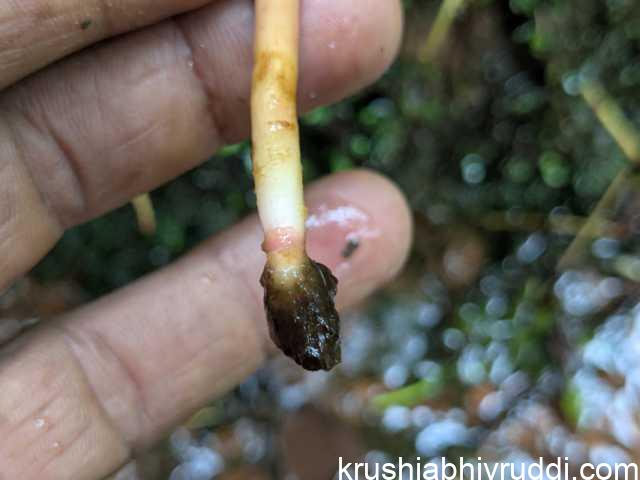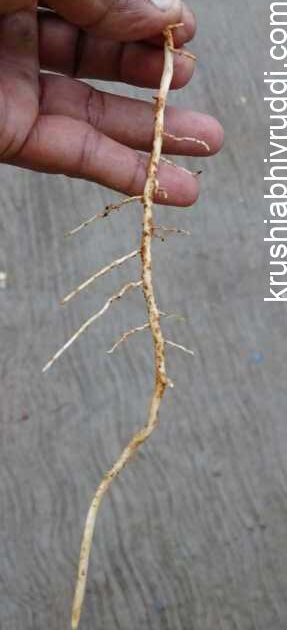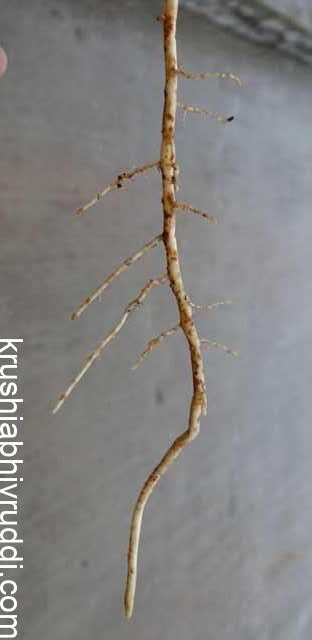Farmer who grows areca nut, he must know its root system and its functions. The areca nut plant (Areca catechu), a vital plantation crop in tropical regions, especially in India, exhibits a typical monocotyledonous fibrous root system. The root system of areca nut is crucial for water and nutrient absorption, physical support, and overall plant growth. A scientific understanding of the structure and function of the root system helps in adopting effective cultivation and management practices.
Root Formation and Initiation
In areca nut, roots originate from the base of the stem known as the root initiation zone. These are adventitious roots, meaning they do not arise from the radicle (embryonic root) but from the stem tissue. The primary root degenerates early, and a crown of roots continuously forms at the base of the trunk throughout the life of the palm.
Root initiation begins early in the nursery stage, and after transplanting to the field, new roots begin to develop within 3 to 4 weeks. These roots emerge in circular whorls and radiate outward from the stem base in all directions, forming a dense mat around the plant.

Absorbing Roots and Their Role
The areca nut root system is primarily made up of two categories of roots:

- Main roots (thick, structural roots)
- Feeder or absorbing roots (thin, fine roots)
The absorbing roots are white, soft, and located mostly in the upper soil layers. These roots are responsible for uptake of water and nutrients. They are more active during the growing season and decline with age. New feeder roots constantly emerge from the growing root tips.
These fine roots are very sensitive to soil conditions such as moisture, temperature, and aeration. A dry or waterlogged condition can severely affect their functioning and health.
Depth and Spread of Roots
Areca nut has a shallow root system, typically spreading out laterally within the top 60–90 cm of soil depth. The maximum root concentration is found in the upper 30–45 cm soil layer, making the crop highly dependent on surface soil conditions.
The roots spread outward in a radius of 75 cm to 1 meter from the base of the palm, forming a compact root zone. Since the roots do not go deep into the soil, areca nut palms are more vulnerable to drought and require consistent irrigation, especially during dry months.

Role of Upper and Lower Roots
The upper roots, located in the topsoil, play a major role in:
- Water absorption
- Nutrient uptake
- Interaction with fertilizers and organic matter
- Quick response to surface mulching and irrigation
The lower roots, found in deeper layers (beyond 60 cm), are fewer in number but provide:
- Anchorage and physical stability
- Support during temporary moisture shortage
- Uptake of residual deep-soil nutrients
Due to the dominance of upper roots, areca nut is highly responsive to surface soil management, including mulching, manuring, and shallow tilling.
Root Growth and Seasonal Variation
Root growth in areca nut is continuous but fluctuates with seasons. During the monsoon and early post-monsoon periods, root activity is high due to adequate moisture and temperature. In summer or water-deficient conditions, root growth slows down significantly.
Practices like irrigation, shade management, and organic matter addition stimulate root growth. Avoiding soil compaction and regular addition of compost improves root biomass and health.
Soil Aeration and Root Health
Since areca nut roots are shallow and occupy the topsoil, soil aeration is extremely important. Poorly aerated soils (heavy clay or waterlogged) reduce oxygen availability to the roots, leading to root rot diseases and stunted growth.
Practices to improve aeration:
- Using well-drained loamy soils
- Avoiding over-irrigation and stagnant water
- Incorporating organic mulches and compost
- Avoiding deep tilling or soil disturbance near the base
The root system of the areca nut palm is shallow, fibrous, and adventitious, with a high concentration of absorbing roots in the upper soil layer. These roots are sensitive to changes in moisture, nutrients, and aeration. For healthy root development, proper irrigation, mulching, and soil management are essential. Understanding the structure and functions of both upper and lower roots enables farmers to optimize plant health and productivity











